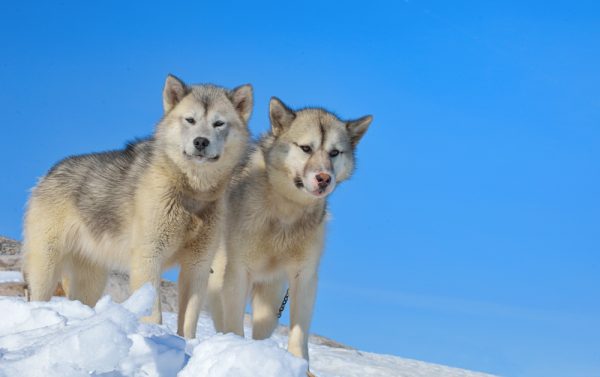
Singing entails using one’s mouth, throat and breath, but you may never have heard heard “singing” like this before:
While “throat singing” is found in several ethnic groups, “Katatjanik” (Inuit throat singing) is uniquely found among the Inuit. Usually a friendly competition or game between two women, the singing starts with one singer setting a repeated, short rhythmic pattern dotted with brief silent intervals. The other singer fills in those gaps with another rhythmic pattern. The sounds are made with one’s voice, but also through inhalation or exhalation. Talented performers make it nearly impossible to determine who is making which sound, but when one person runs out breath, starts laughing, loses concentration or “messes up,” they lose. In a competitive environment, the winner is the singer who beats the largest number of people.
Originally, the signing was entertainment among Inuit women while men were away on hunting trips, a way to keep busy and warm. According to Inuit legend, however, the first throat singers weren’t Inuit or even human, but small birds with human-like features called Tunirtuaruit. The verbal art form was nearly lost during colonization when native traditions were discouraged, but it is enjoying a resurgence through the efforts of young Inuits like Shina Novalinga who posts many of her throat singing videos to TikTok. In 2001, the first throat-singing conference was held in Puvernituk, Nunavut, and it was even featured at the 2010 Winter Olympics in Vancouver.
If you think this is easy, watch this three minute video in which Canadian Inuit throat singer, Tanya Tagaq, explains how it’s done:
One more video takes us to the topic of dogs because this traditional Inuit song entitled, “Sled Dog Puppy” mimics the sounds and antics of a young husky pup:
There are several breeds associated with the Inuit: The Canadian Eskimo Dog (or Qimmiq), is considered by some to be the same breed as the Greenland Dog because, those sources say, neither has not yet diverged enough genetically to be considered separate breeds. This is challenged by the fact that the Canadian Kennel Club places both in their working-dog group, each a distinct breed from the other. Somewhat confusing is that the Canadian Eskimo Dog is also referred to as the Canadian Inuit Dog, the name the Government of Nunavut called it when it make the breed the territory’s official animal.
Though the Northern Inuit Dog has “Inuit” in its name which hints at antiquity, it was developed in the 1980s by Julie Kelham who wanted a domestic dog resembling the wolf (it actually has no wolf DNA). In it’s development, northern breeds of Inuit tribe dogs were used along with Malamutes, Huskies, German Shepherds and others. If you watched the HBO series, ‘The Game Of Thrones” and saw “Dire Wolves,” you were actually seeing Northern Inuit Dogs chosen to portray them. A Northern Inuit Dog named, “Dewey” also appeared in the fourth season of the TV series, Outlander, “playing Rollo.”
Some may want to include the American Eskimo Dog in the list of breeds associated with the Inuit, but the name is misleading. This breed actually descended from the German Spitz brought to North America by immigrants for use as all-around farm dogs (it should be noted that when referring to the Inuit people, the term Eskimo is considered pejorative and offensive, though it was once widely used in Alaska).
